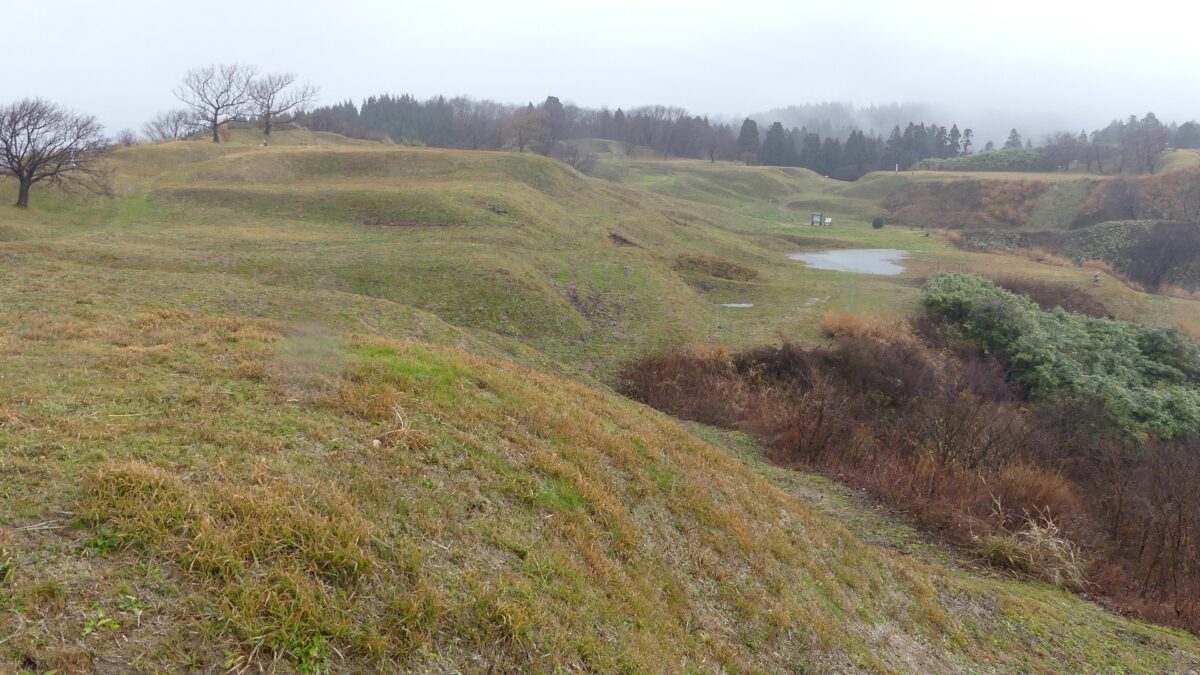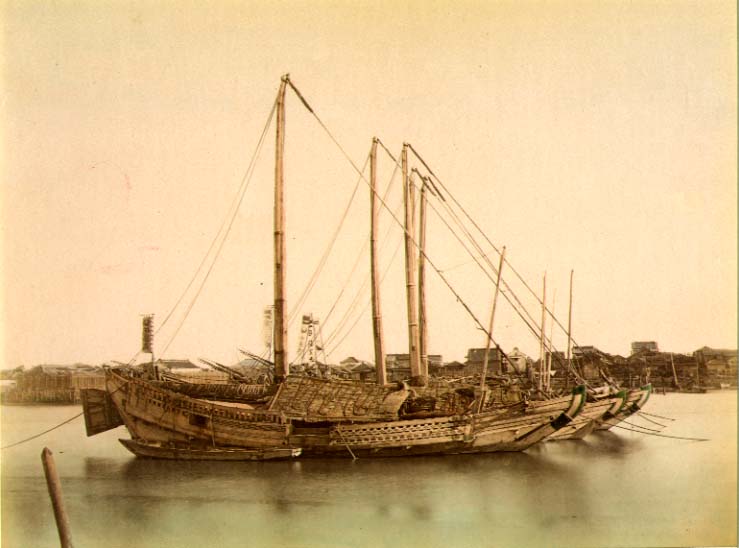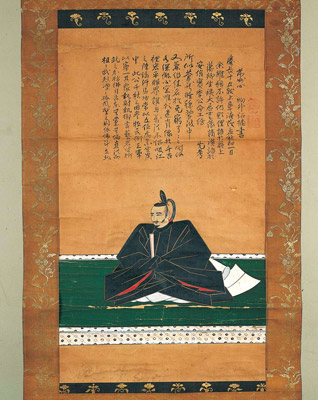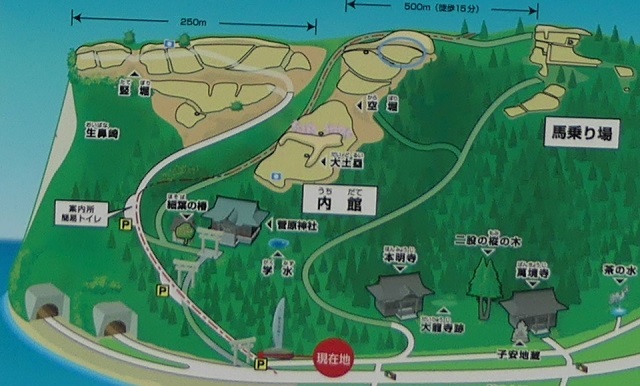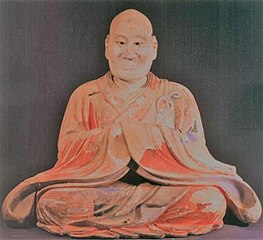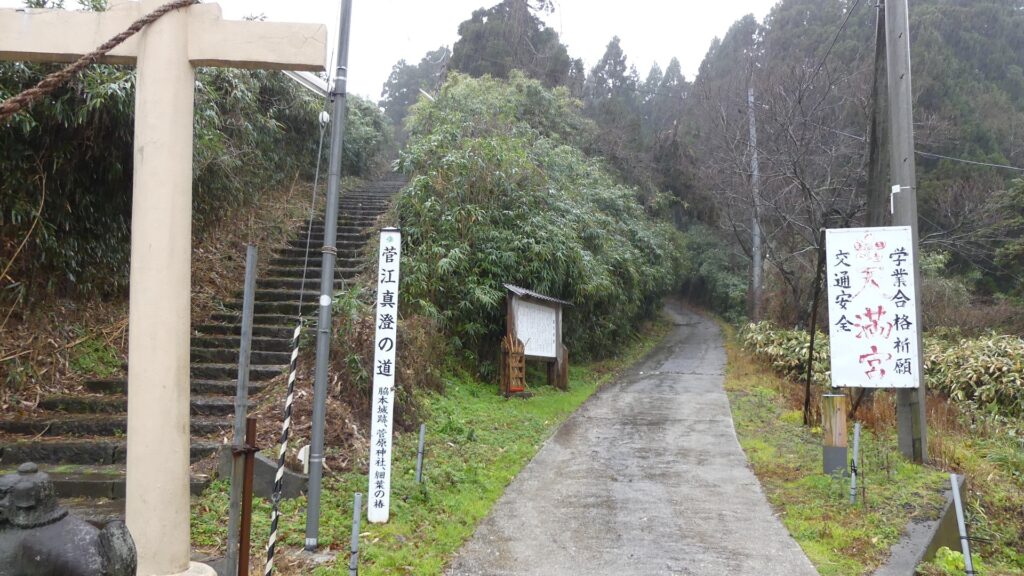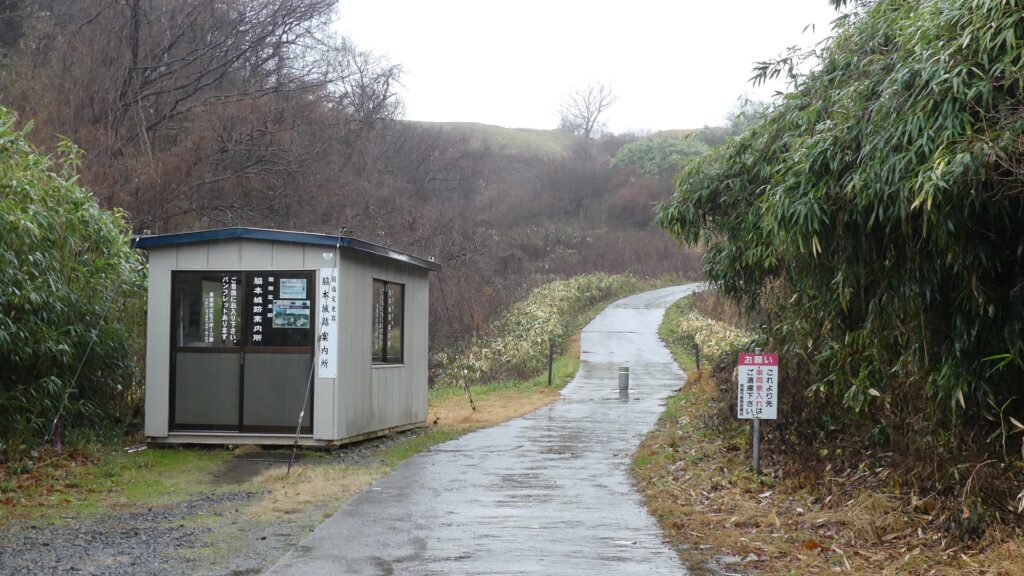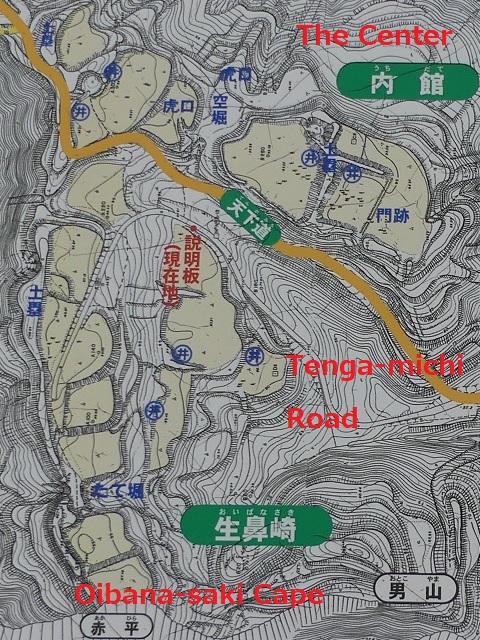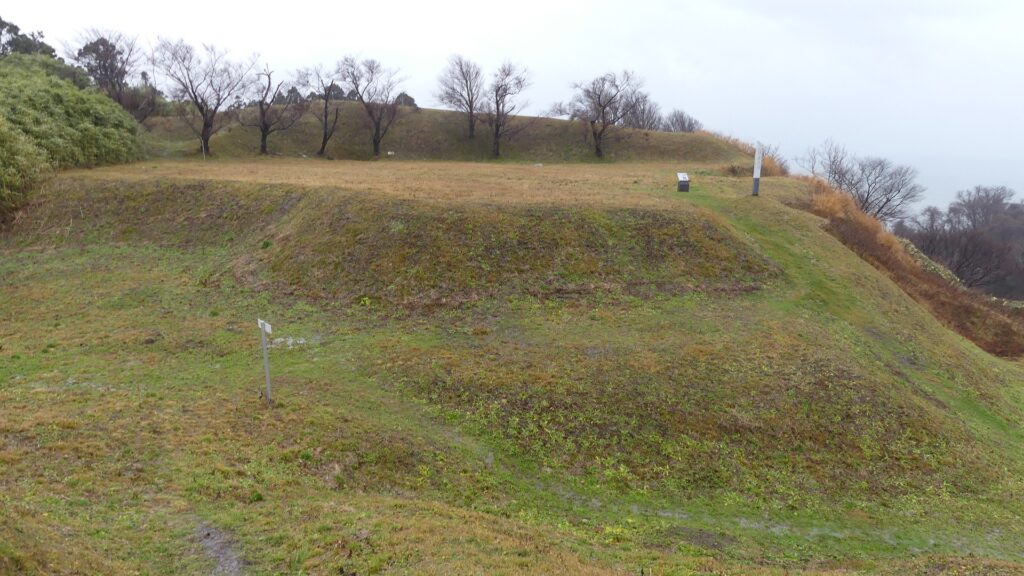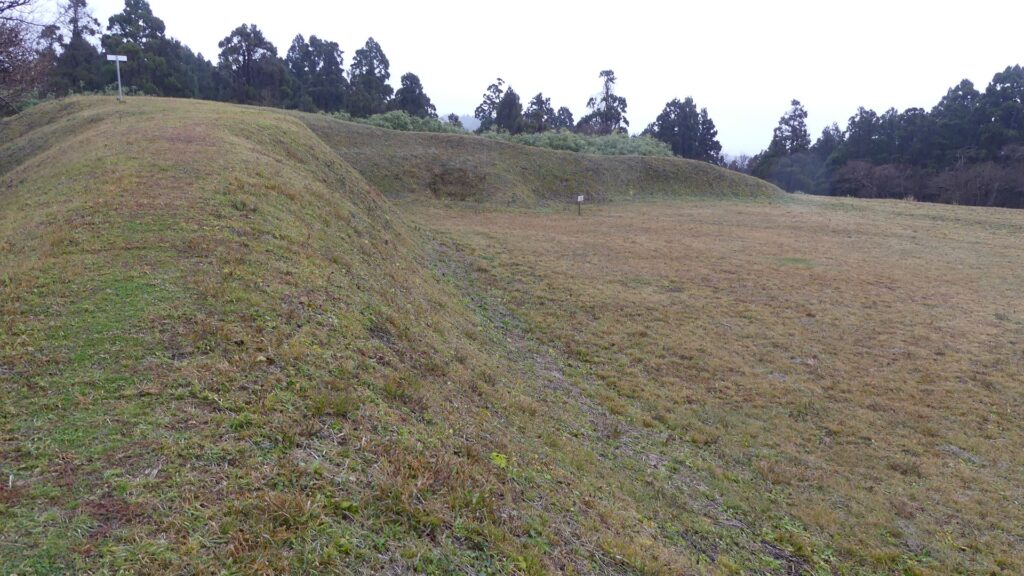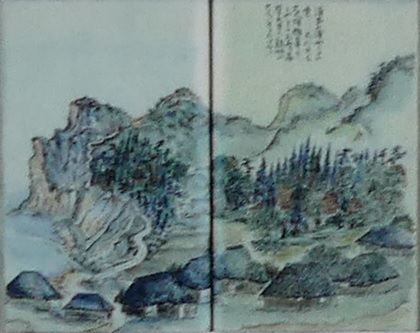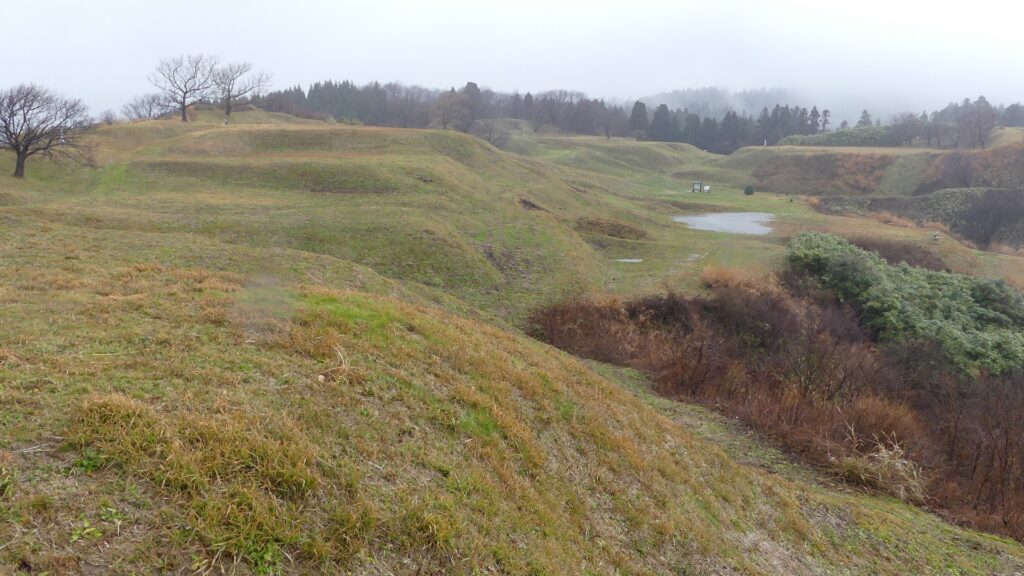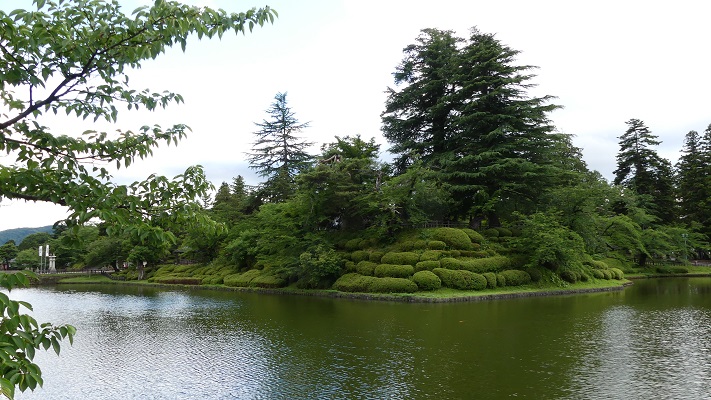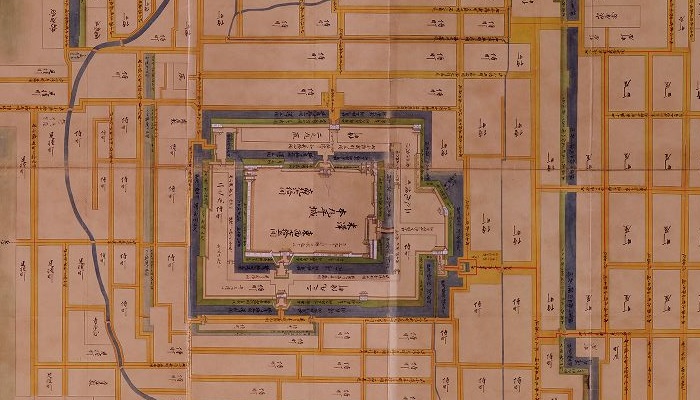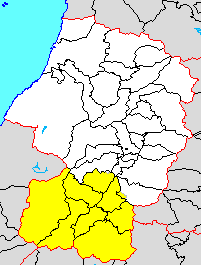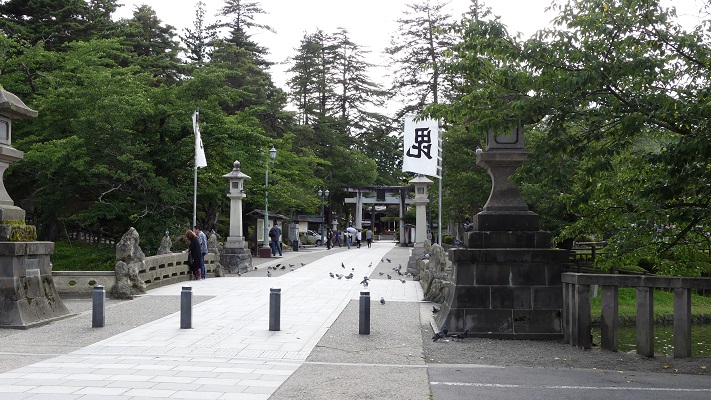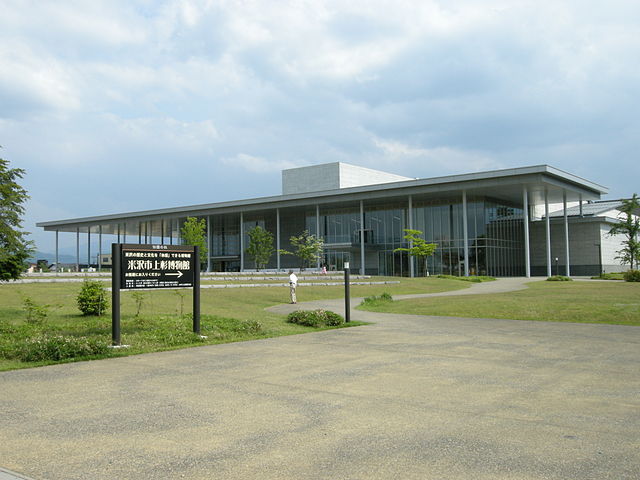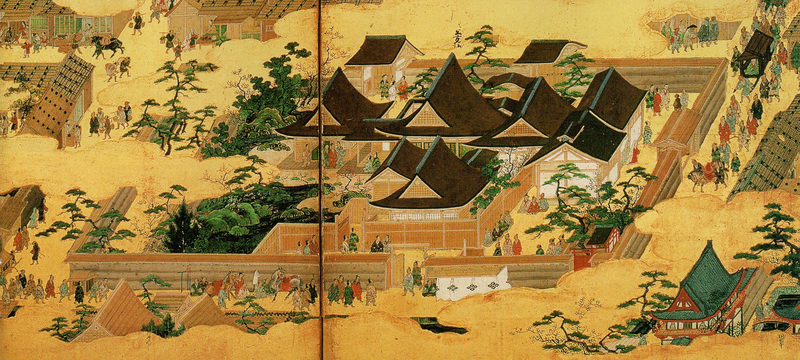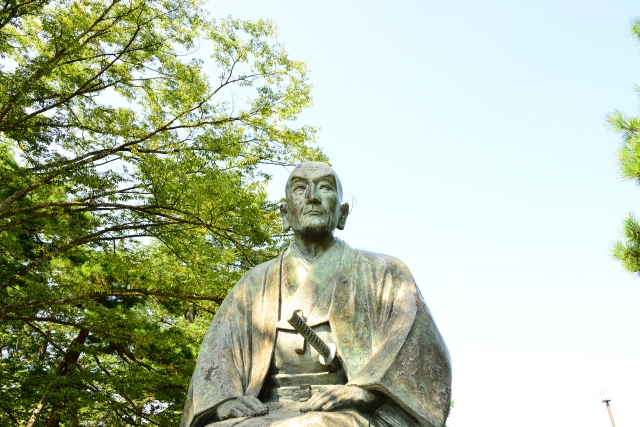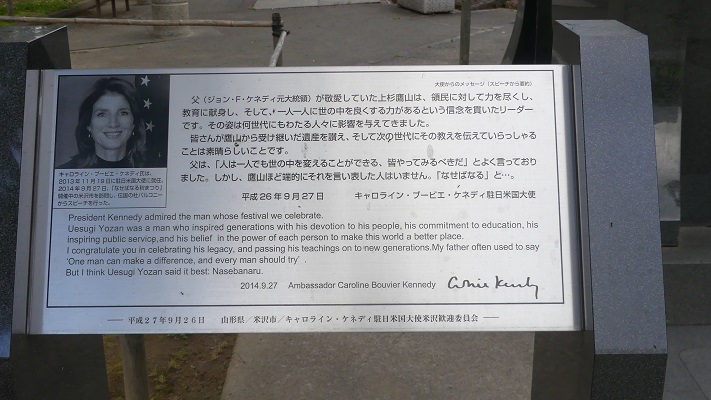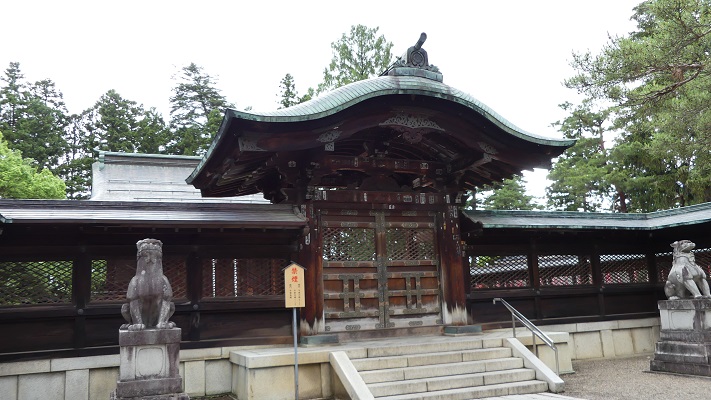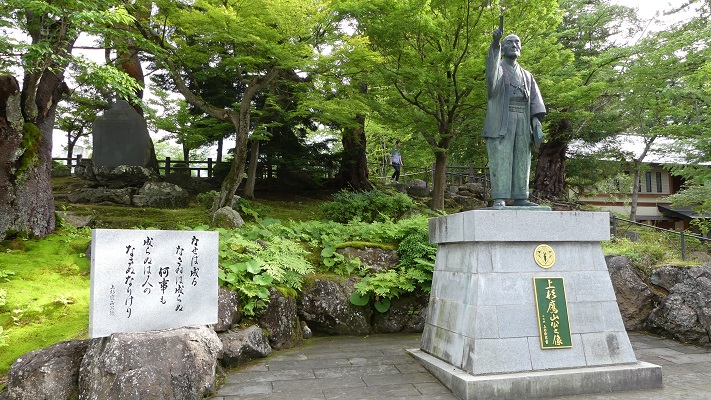立地と歴史~Location and History
蝦夷と城柵~Emishi and Josaku
秋田城は、「城柵」と呼ばれた政府の防衛拠点の代表的なもの一つで、古代に中央政府により東北地方の統治のために設置されました。もともと東北地方には、政府の支配に属さない蝦夷と呼ばれる部族の人々が住んでいました。彼らは政府に属す古代の日本民族とは異なる言語を話し、またそのうちの一部はアイヌ民族の始祖になったと言われています。
Akita Castle was one of the representatives of official defense sites called “Josaku” and was placed for the governance of Tohoku Region by the central government in the Ancient Ages. Originally, people belonging to the Emishi tribe ,who were not subject of the government, lived in the north of Tohoku Region . They spoke a different language from that of the ancient Japanese people living under the government, and some of them were also said to be ancestors of the Ainu tribe.

政府はその領土を広げるため、支配下の人々を移住させたり、「蝦夷」の人々を臣民として受け入れようとしました。ところが、蝦夷はしばしば政府に反抗しました。城柵は複合的な拠点で、城としての用途だけではなく、統治や全般的な用途の施設もありました。政府は10前後の城柵を築き、秋田城はそれらの中で最北で、出羽国の北部(現在の秋田県)に位置していました。
The government aimed to spread its domain, so it tried to relocate its own people there and to accommodate “Emishi” people as its subjects. However, Emishi often rebelled against the government. Josaku was a complex mix of sites made not only for the use of castles, but also for government purposes and general facilities. The government built around 10 Josaku and Akita Castle was the northernmost site among those Josaku and it was located on the northern part of Dewa Province (what is now known as Akita Prefecture).
最北の地で外交も~Even Diplomacy in Northmost land
秋田城の起源は、733年に現在の山形県(秋田の南)から移転してきた「出羽柵」という城柵です。この移転は、領土拡大計画の一環でした。760年には秋田城と改称されます。この城は他の城柵と同じように、中心部分に政庁があり、外郭には高さ4mを超える屋根付きの築地塀が巡っており、外周は2km以上ありました。この拠点は出羽国の国府でもあり、アジア大陸にあった渤海国との外交を行う役目も担っていました。
The origin of Akita Castle lies in the Josaku called “Ideha-no-ki” which was moved in 733, from a region where now Yamagata Prefecture (south of Akita) is. This movement was done as a part of expansion plan. Then it was renamed Akita Castle in 760. The castle consisted of the Government Office in the center, and roofed mud walls on the outline, similar to other Josakus, which were over 4m high, and their perimeter was over 2km. The site was also the provincial capital of Dewa Province and had a role in the foreign diplomatic relation with Bohai Kingdom on the Asian continent.

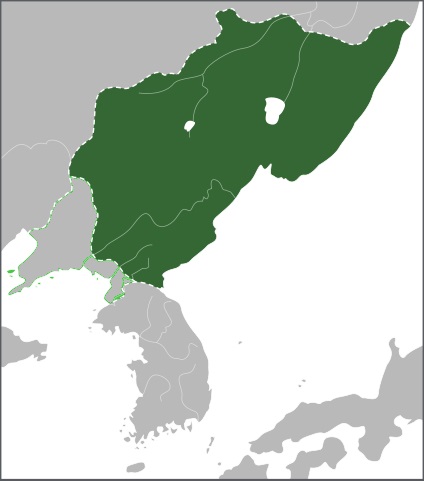
多くの困難と遺産~Many difficulties and heritage
その期間中、秋田城は多くの災難に見舞われました。例えば830年には、出羽国大地震により大きな被害を受けました。その後、蝦夷の人々による2回の反乱が、878年と939年に起こりました。特に878年の元慶の乱では、城は一時占拠されてしまいます。発掘により、政庁が焼けた跡が実際に発見されました。
During its time, Akita castle faced a lot of adversities. For instance in 830, the castle suffered a heavy loss from the Dewa Great Earthquake. After that, two rebellions by Emishi people happened in 878 and 939 respectively. In particular, during the Gangyo Rebellion in 878, the castle was once captured. Traces of burned Government Office were actually found by the excavation.
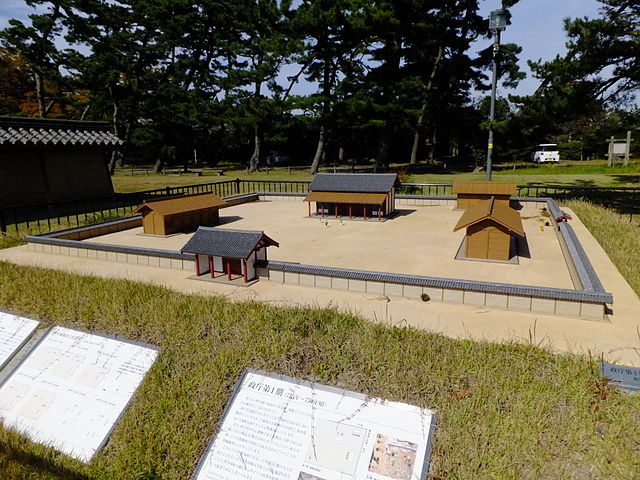
この城は10世紀にその歴史的役割を終えたため廃城となりました。しかしながら、城主の官職名「秋田城介」は武士の名誉職として使われ続けました。恐らくもともとの官職が北の地を鎮護するためのものだったからでしょう。
The castle was abandoned by the late 10th century after its historical reason was finished. However, the name of the castle’s lord “Akita-josuke” was used as a warrior’s honorary post, perhaps because the original post had been created for protectors of the northern lands.

特徴~Features
現在、秋田城跡は「高清水公園」という歴史公園として整備されています。更には最近の2016年、秋田城跡歴史資料館がオープンしました。公園でだけでなく、ここでも城について多くのことを学ぶことができます。公園には見ておくべき場所が三つあります。
Now, the ruins of Akita Castle have been developed as a historical park called “Takashimizu Park”. In addition, Akita City History Museum of Akita Fort Ruins opened recently in 2016. You can learn a lot about the castle at the museum as well as in the park. There are three main parts in the park you should check out.
政庁跡~Ruins of Government Office
もし車かバスで公園を訪れた場合、駐車場かバス停からは一番近いところにあります。政庁もまた屋根付きの築地塀に囲まれていました。建物のレイアウトは、古代奈良にあった朝廷の建物に準じていました。城跡が発掘された後は、建物の柱の位置が地面の上にわかるようになっています。東門とともに塀の一部も復元されています。残念ながら、西側の部分は道路建設のために破壊されてしまいました。
If you visit the park by car or bus, it is the nearest spot from the parking lot or the bus stop. The government office was also surrounded by roofed mud walls. The layout of its buildings followed the way of the Imperial Palace in ancient Nara. After the ruins were excavated, the positions of the building columns can be seen on the ground. Part of the walls has also been restored with the Eastern Gate. Unfortunately, the western part was destroyed by the construction of the road.

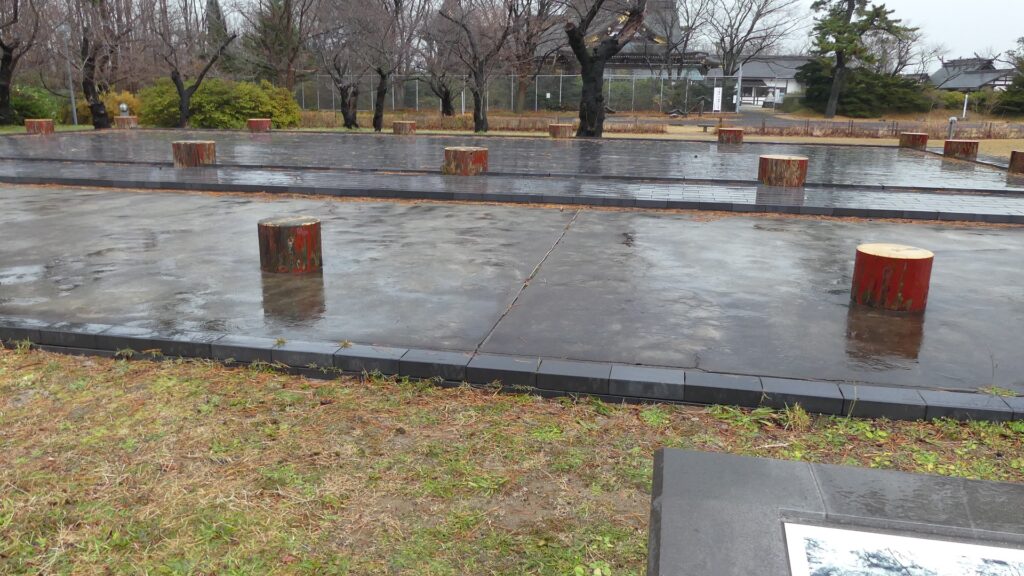
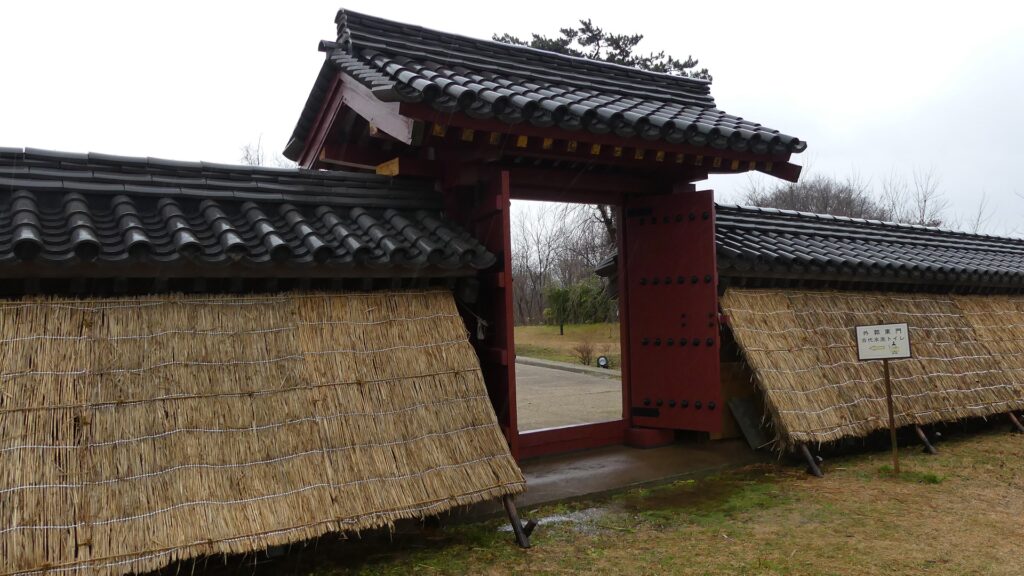
外郭東門~Eastern Gate of Perimeter
政庁跡からは、12mの幅がある「東大路」という城内道路を歩いて行くことができます。この道路は270m続き、屋根付きの築地塀とともに復元された外郭東門にたどり着きます。この塀は、長さが50mあり、発掘後の研究により外郭の一部として復元されました。双方とも近年元来の工法で、城の初期の状態を想定して作られました。また、塀部分は版築という多層の土を押し固める方法が用いられています。
You can walk on the restored 12m wide inner road called “Higashi-oji” from the government office ruins. This road goes on for 270m, then you will reach the restored eastern gate of the perimeter with the roofed mud walls. These walls, which are about 50m long, are part of the restored perimeter based on the study after excavation. The gate and walls were built in the original way recently, assuming the first appearance of the castle. The walls are also made using a method called Rammed Earth, which refers to compressing many layers of earth.
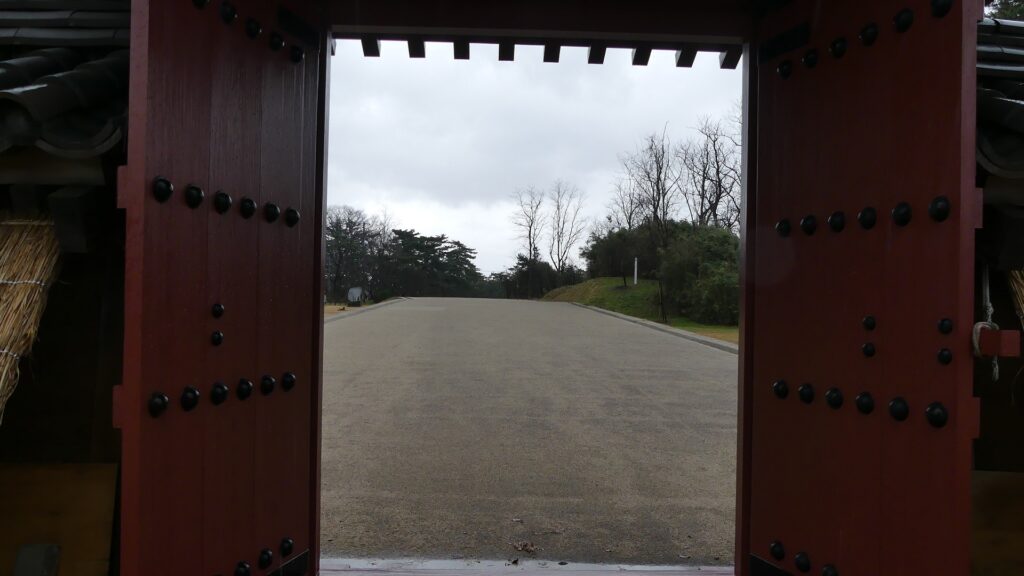
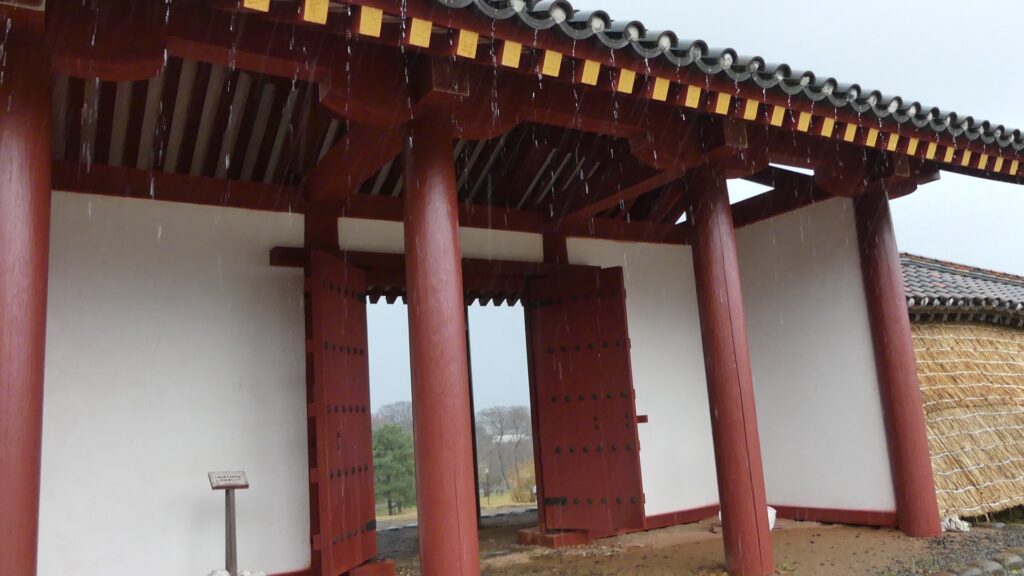
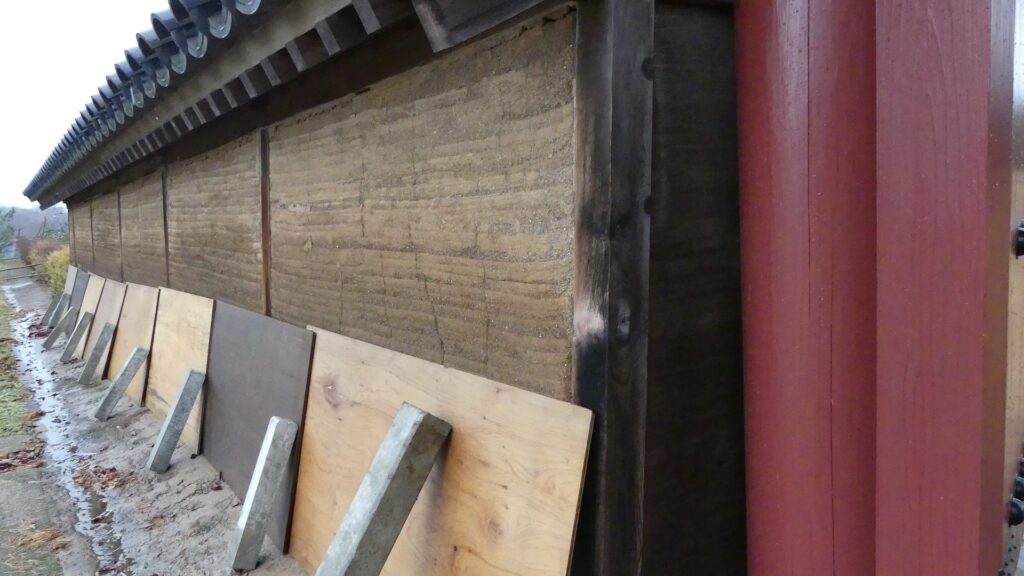
古代水洗トイレ~Ancient flush toilet
この城で最も面白い見物の一つに復元された古代水洗トイレがあります。元からあること自体稀ですが、復元されることも稀です。その上に、もう一つ興味ある事実が遺跡から見つかりました。遺跡からの遺物の中に、豚を食べる人から出る寄生虫の卵があったのです。日本の当時の人たちは豚を食べませんでした。そのため、そのトイレを使った人は外国から、恐らくは渤海か中国から来たに違いないのです。この事実は、古書に書いてあるのと同じように、秋田城と外国との関係を証明しているのです。
One of the most interesting attractions of this castle ruins is the restored ancient flush toilet. The original one was rare, and the restored one is also rare. Moreover, one more interesting fact was found at the ruins. The relics from the ruins include eggs of the parasite which lived in a man who ate pork. Japanese people at that time didn’t eat pork, so the man who used the toilet must have come from a foreign country, probably Bohai or China. The fact proved the relationship between Akita Castle and foreign countries while old documents say the same thing.
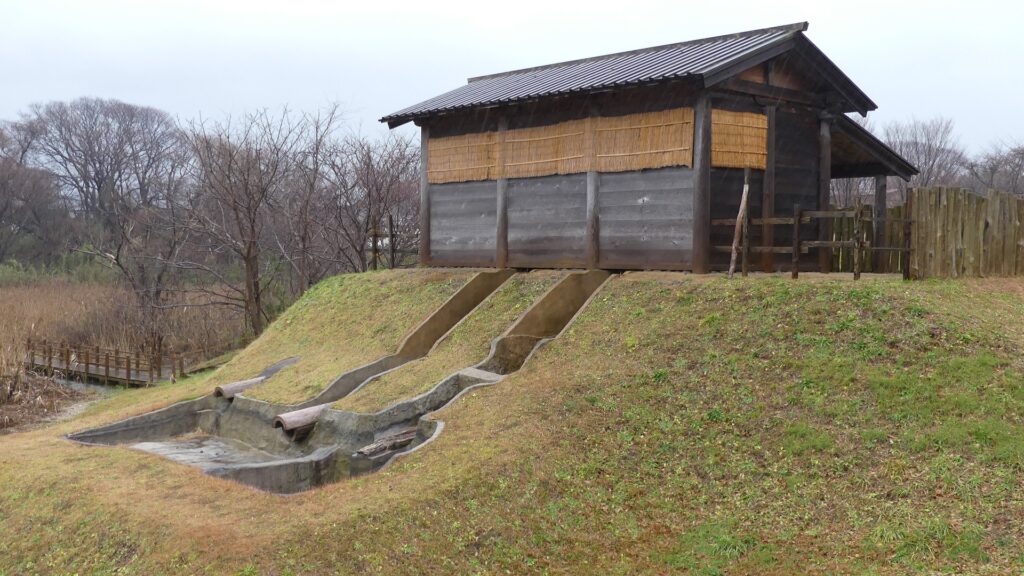

その後~Later History
中世になって、人々は秋田城のことをまだ覚えていましたが、どこにあったかは誰もわからなくなりました。江戸時代に有名な旅行家の菅江真澄が秋田にしばらく滞在して、辺りを歩き回り、どこに城があったか推測しました。最初の国による近代的調査は1924年に行われ、城の土塁が発見されました。いくつかの調査により、城の場所が特定され、1939年に城跡は国の史跡に指定されました。発掘は1959年以降行われています。更には遺跡が宅地として開発されていたため、行政側も土地の買い上げを始め、歴史公園として整備しました。そのおかげで、私たちは公園で復元された施設を見学できるのです。
In the Middle Ages, people still remembered Akita Castle, but no one was sure where it had been. In the Edo Period, a famous traveler, Masumi Sugae stayed in Akita for a while, walked around the area, and speculated where the castle was. The first modern national research was done in 1924, which discovered the earthen walls for the castle. After the place of the castle had been confirmed by several researches, the ruins were designated as a National Historic Site in 1939. Excavations have been done since 1959. In addition to developing the ruins as a residential area, the officials also started intensive purchase of land to develop them as a historical park. That’s why we can see the developed park with restored items.
私の感想~My Impression
私は以前、秋田には、日本の他地域とは違う、アジア大陸の人々に近いDNAを持っている人もいると聞いたことがあります。この話がちょうど秋田城と外国とが関係した説に図らずも一致したことになります。また、この城跡では、日本の歴史の一端を学んだり、見たりするのにいい機会を得られると思います。
I have once heard that some people around Akita may have different DNA from that of other areas in Japan, but similar to people in the Asian continent. I was fascinated as it coincided with the theory of a relationship between Akita Castle and foreign countries. I also think that the ruins of the castle can offer us a good opportunity to learn and see part of Japanese history.

ここに行くには~How to get There
車で行く場合は、秋田自動車道の秋田北ICから約15分かかります。秋田城跡歴史資料館脇に駐車場があります。
電車の場合は、JR秋田駅から将軍野線か寺内経由土崎線のバスに乗り、秋田城跡歴史資料館前バス停で降りてください。
If you want to go there by car, it takes about 15 minutes from the Akita-kita IC on Akita Expressway. There is a parking lot beside Akita City History Museum of Akita Fort Ruins.
When using train, take the bus on Shogunno Line or Tsuchizaki Line via Terauchi from JR Akita Station, and take off at the Akitajo-ato-rekishi-shiryokan-mae bus stop.
リンク、参考情報~Links and References
・秋田城跡歴史資料館、秋田市(Akita City Official Website)
・「日本の城改訂版第128号」デアゴスティーニジャパン(Japanese Book)
・「蝦夷と城柵の時代」熊谷公男編、吉川弘文館(Japanese Book)


